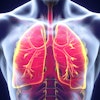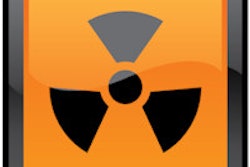California researchers who examined more than 12,000 children who had blunt abdominal trauma have identified seven factors that necessitate a CT scan in the emergency department, according to a study in the Annals of Emergency Medicine.
Those not presenting with external trauma, nausea, neurological changes, and a few other factors had less than a 0.1% chance of requiring emergency abdominal intervention, concluded the study team from University of California, Davis (UCD) School of Medicine.
CT's radiation risks are higher for children, who are more sensitive to the effects of ionizing radiation, said co-author Dr. James Holmes.
The study included more than 12,000 children who presented to emergency rooms after blunt trauma to the torso resulting from a car or bicycle crash, assault, or other accidents. Lead investigator Dr. Nathan Kuppermann, Dr. Peter Sokolove, Holmes, and colleagues evaluated multiple factors related to their medical histories and clinical presentations.
They prospectively identified seven factors likely to be associated with clinically important injury, including evidence of trauma on the abdomen or chest (such as seat-belt marks resulting from an accident), neurological changes, abdominal pain or tenderness, abnormal breath sounds, or vomiting.
Children without any of these factors had only a 0.1% chance of an abdominal injury that required acute intervention. Thus, for the great majority of cases, CT would not have provided additional information.
The risk of later developing cancer from the CT scan was greater than the risk of significant injury for children who had none of the seven factors, the group concluded.
The authors also cautioned that the prediction rule was useful only as a tool for ruling out serious injury. Even having one of the seven factors should not lead to an automatic recommendation for a scan, they said, because if everyone in this category were to undergo CT, utilization of CT scans would increase over current levels.
Clinical judgment must be used in determining the need for a CT scan, according to the group, and the utility of the seven factors will need to be validated in a separate study before they can be applied.




















